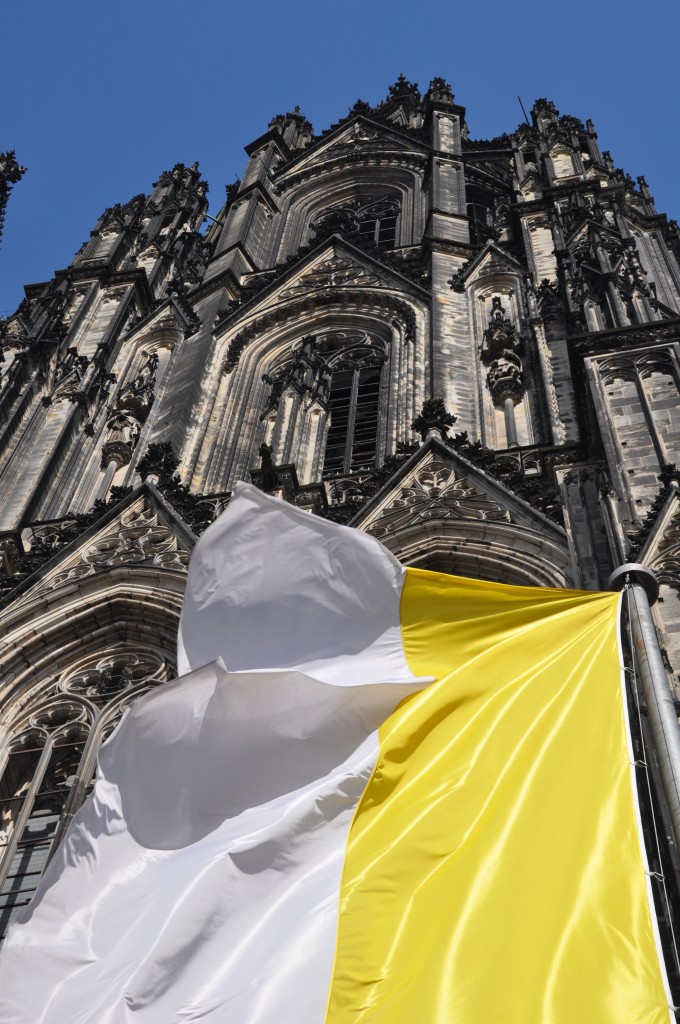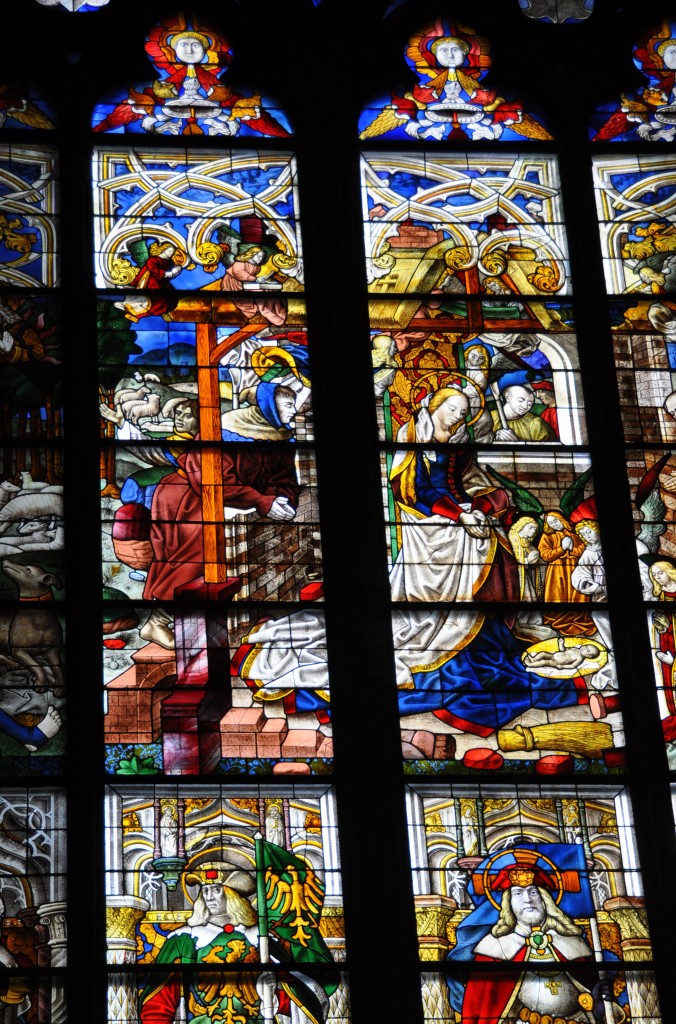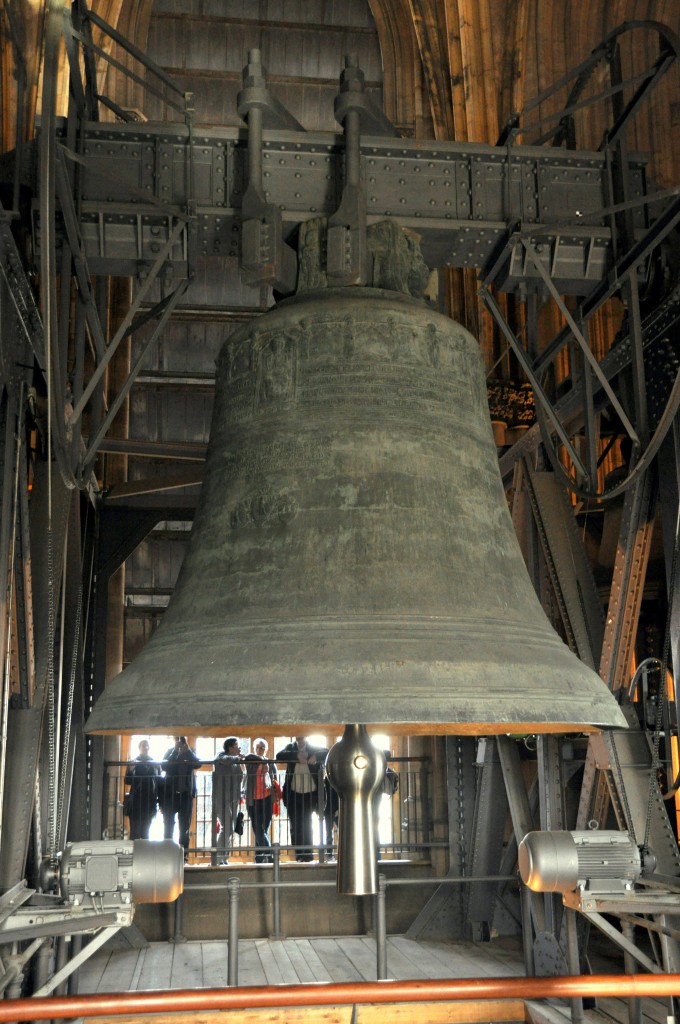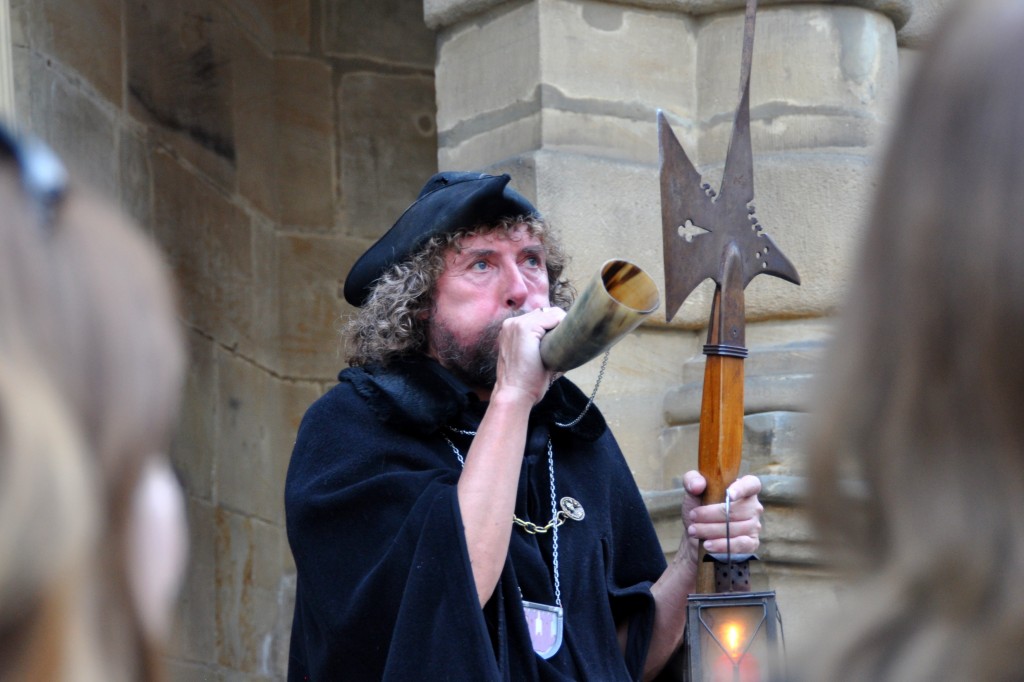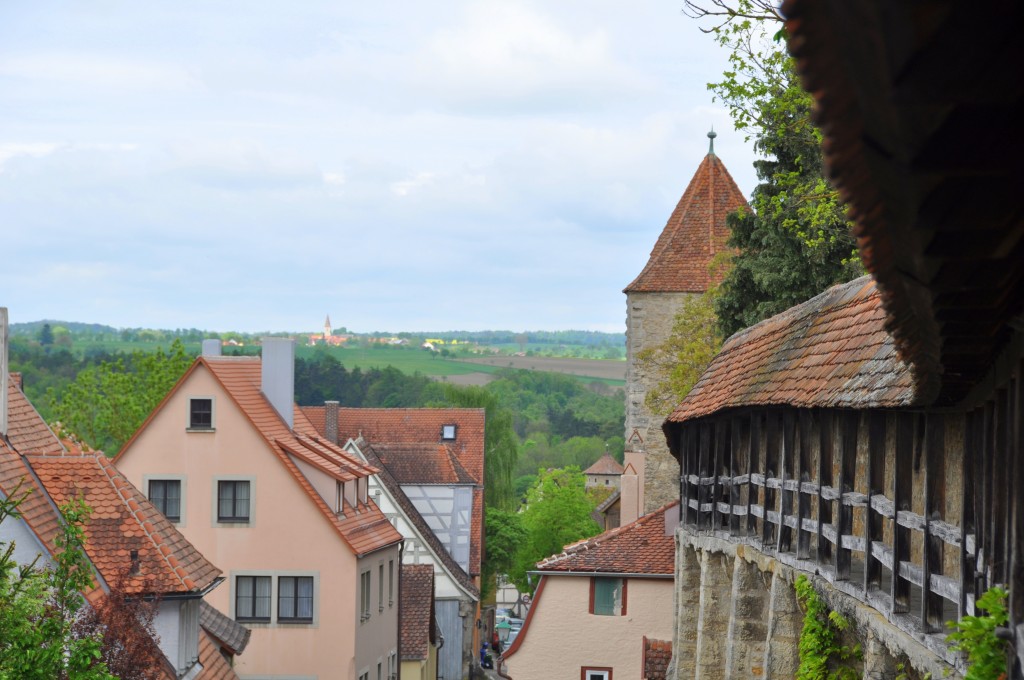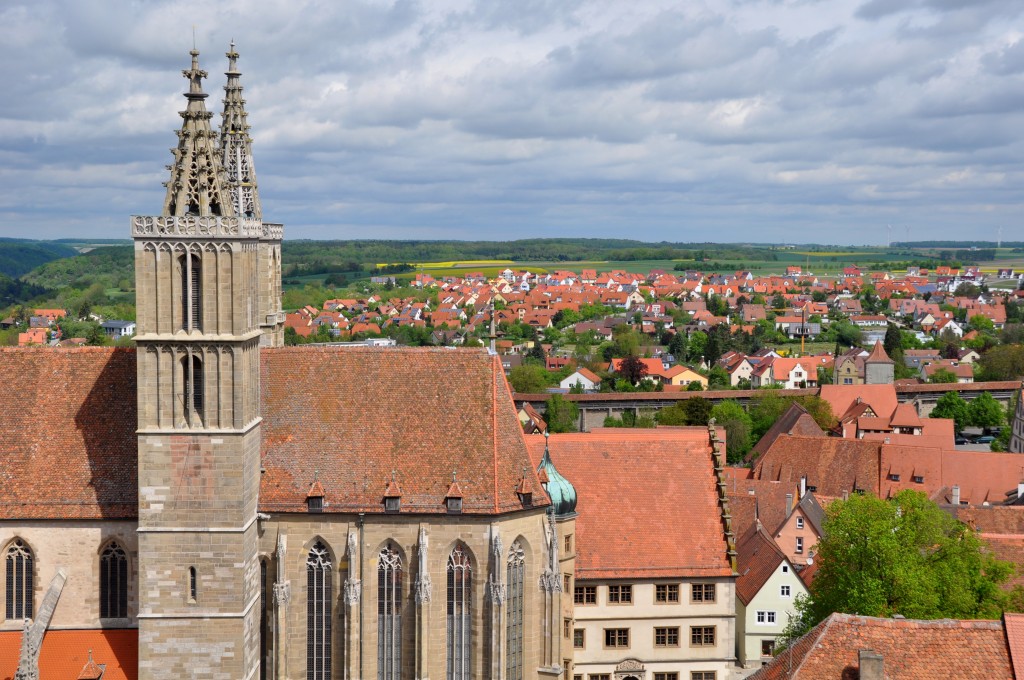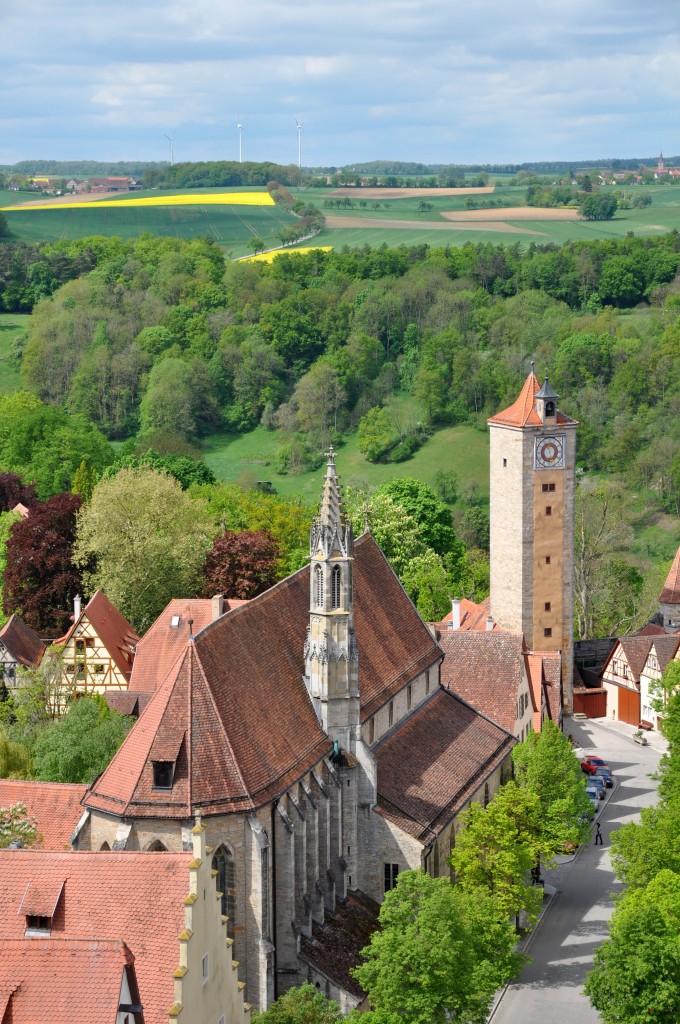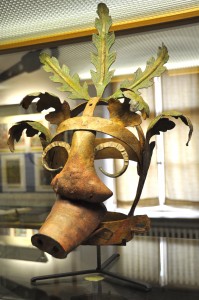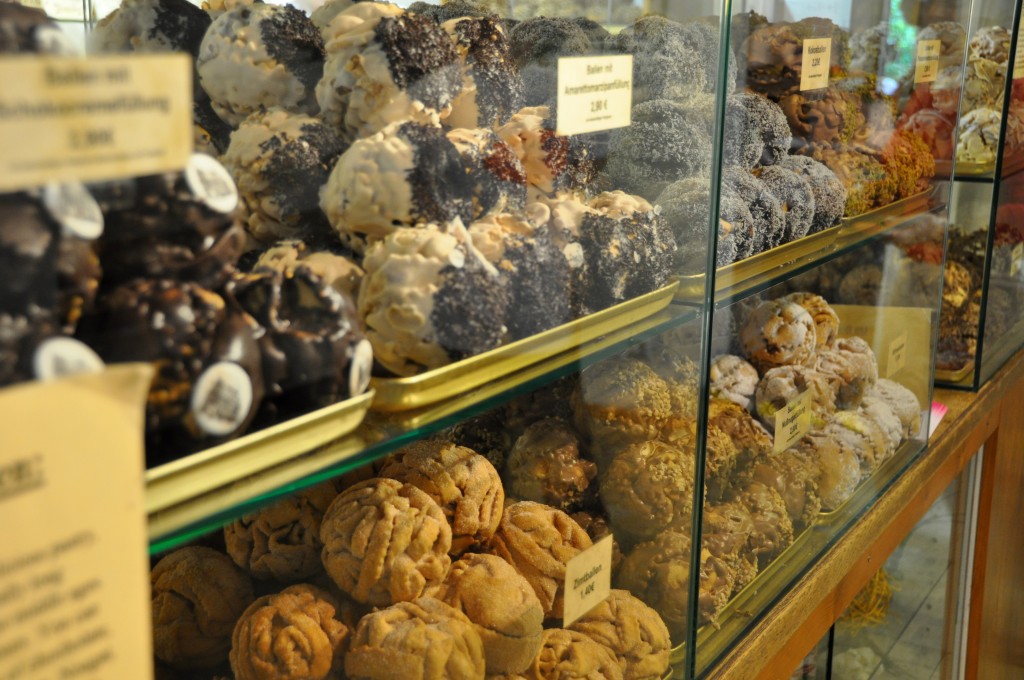Das Königliche Gemüse ~ The kingly vegetable
It is Spargel Season in Germany! For 8 weeks, from mid-April (give or take) through June 24 the country goes wild over this vegetable delight. Every corner has a local vendor, every restaurant has a unique menu, and every German only has a few precious weeks to indulge!
Literally, Spargel means asparagus. However, the obsession focuses only on white asparagus, which is sweeter and more tender. This zartes Elfenbein (tender ivory) is grown in large mounds and covered with black tarp until harvest time, which prevents photosynthesis from occurring and ensures that the product remains colorless. If allowed to photosynthesize, flower, and continue growing, the Spargel will turn green, and ultimately lose its magic, and perhaps the love of millions of people.
I’m not exaggerating when I say that the country loses its mind for the Frühlingswonne (springtime delight). There are festivals, bicycle tours, contests, beauty pageants, and every conceivable concoction of culinary combination. So, this being our first Spring in Germany, we joined the masses and caught “Spargel Fever”!
Spargel Fest – The rain washed away most of Spargel Fest and we went home empty handed. Hoping for better luck next time!
Spargel Harvest – I really didn’t know what to expect with this adventure, since all I was going on was a one-sentence description from the Internet and a few e-mail exchanges with the city tourist office. The German verb for “to harvest” wasn’t even part of the description, so I was just assuming that was what we were going to do. I mean, what else is there to do?
When we arrived, we were given gloves, a basket, some tools, and a 2-minute lesson on how to harvest the Weißgold (white gold). Then, we were left to do the work and take home whatever spoils we could uncover!
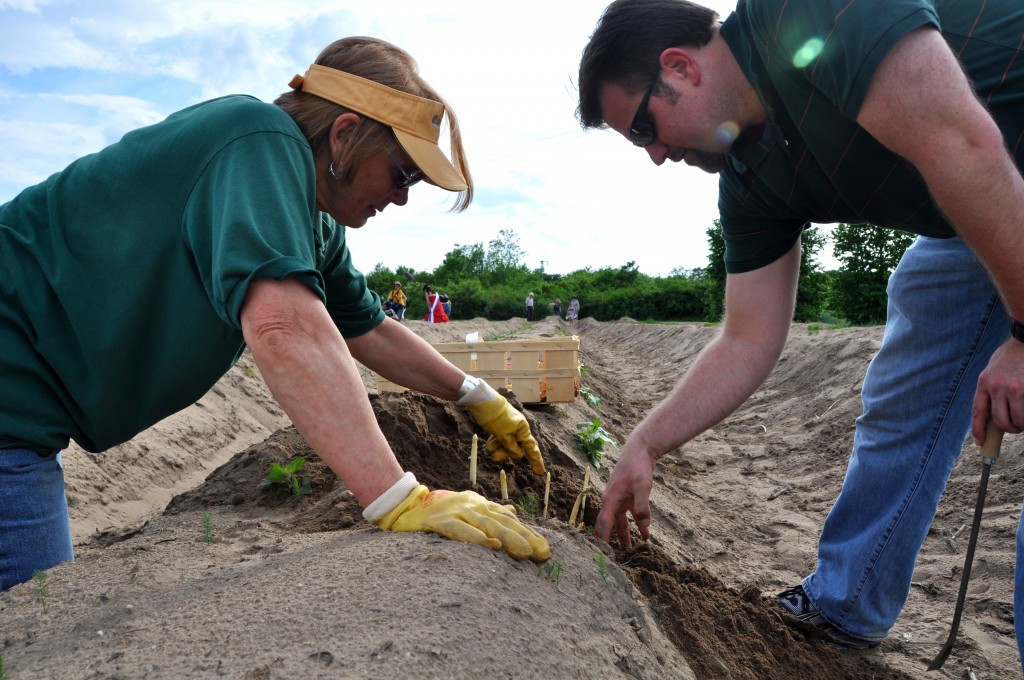
The local TV station was also there, and Joe made his pubic debut in German!
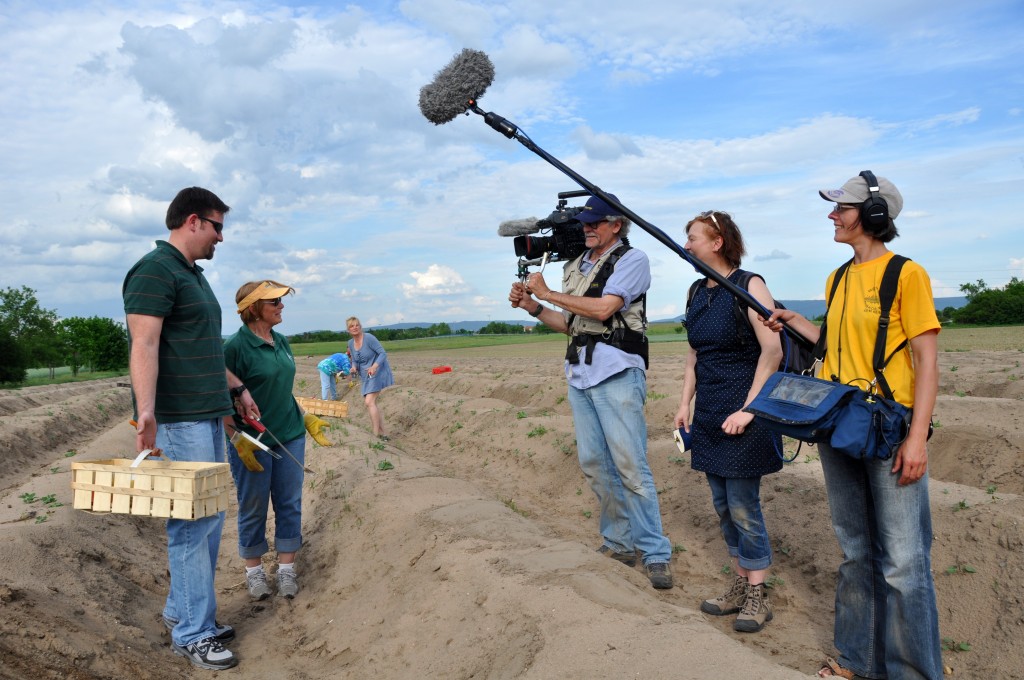
Joe's 8 seconds of fame
Even the Spargel Queen had her moment in the spotlight.
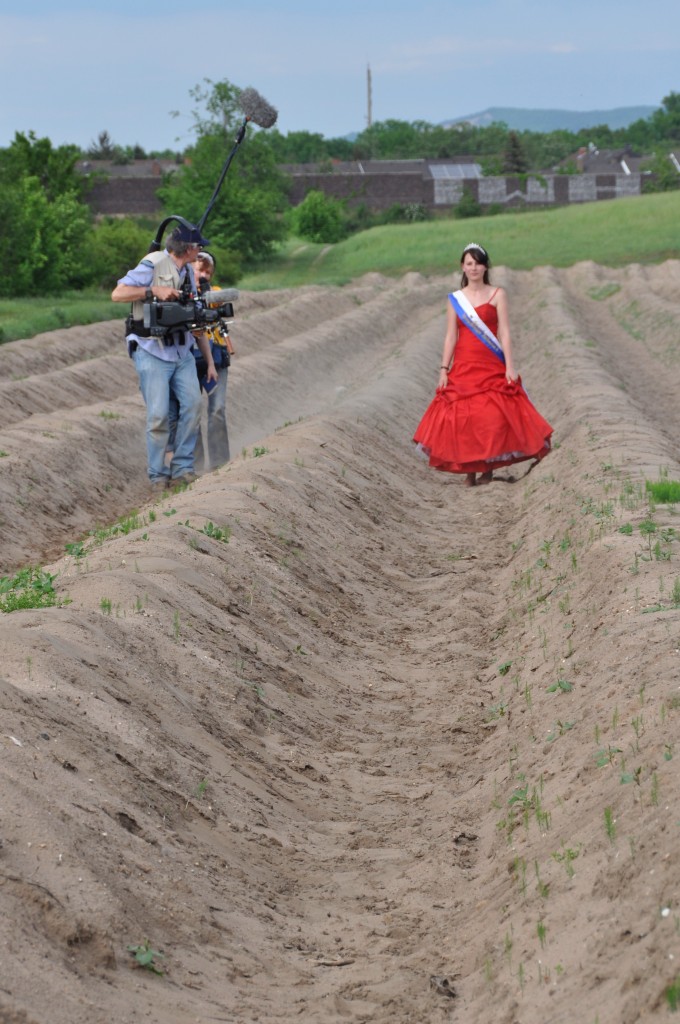
the Spargel Königin
The harvesting crowd was quite diverse. In addition to the Spargel Queen, and the tourists (us), there were plenty of children, and a few women who needed a lesson in how to dress for field work. There was a particular lady who was wearing a dress so short, that the entire world saw her skivvies while she was harvesting. No joke. These weren’t even like the cute bloomers that cheerleaders wear because they know everyone will see under their skirts. These were straight-up, mom panties! Her kids were even there to prove it.
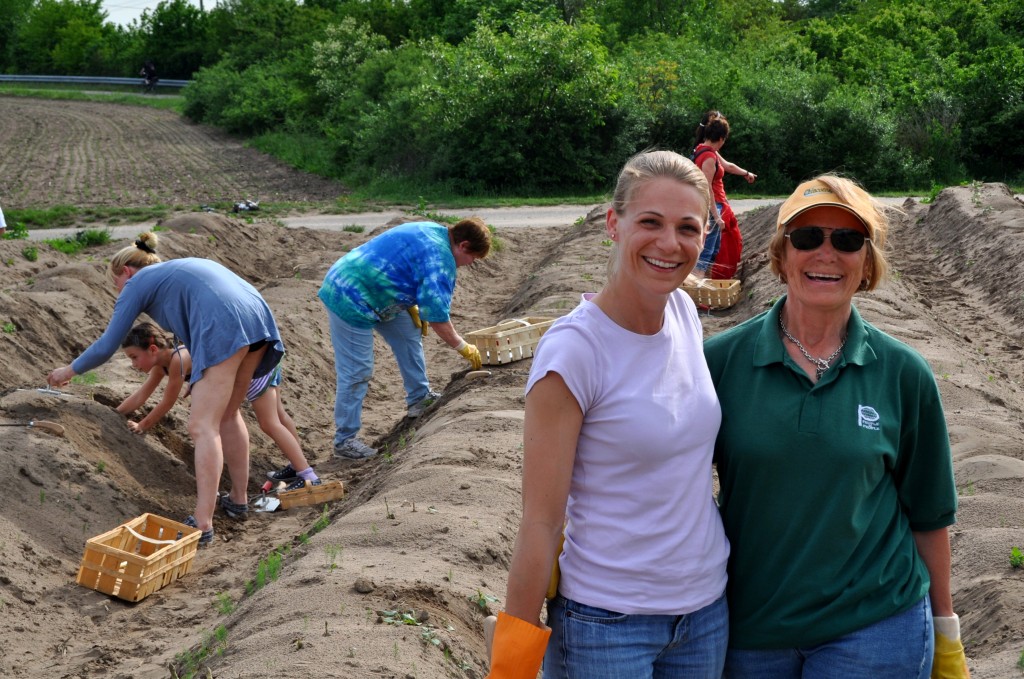
I'm sorry. It was hard to resist.
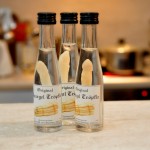
Spargel Schnapps
After we bagged our bounty for the day and washed up, the owners of the farm had made some delicious Spargel, ham, and egg salad for everyone to enjoy. We were also treated to some Spargel Schnapps and Spargel-shaped sweets! Yup, you saw it here first. I told you they were crazy about this stuff!
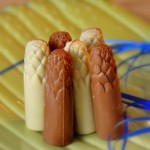
- Spargel Dessert
An afternoon with Mom and Joe + digging through the dirt for farm-fresh Spargel = best 5 Euro I ever spent!
Spargel Cooking Class – After a half-hour lecture auf Deutsch on the history, quality levels, nutritional value, and some other topics I obviously didn’t have the vocabulary for about Spargel, we headed into the kitchen! Since this was the first cooking class that the three of us had ever taken, we were totally unprepared. Everyone stepped into their respective cooking stations and took out their aprons and personal hand towels…except us!
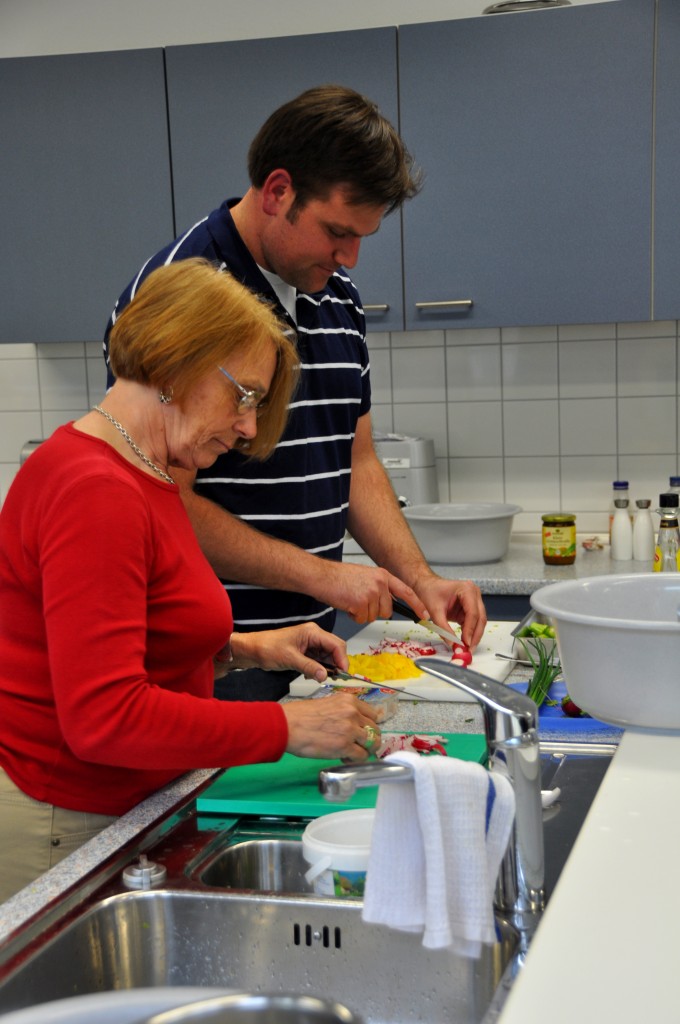
Joe was the Chief Translator, mom the Chief Chopper, and I only washed my attempt at salad dressing down the sink once. At the end of class, we compiled the 7 different recipes (including Spargel Spaghetti, Sesame Seed-Teryaki Spargel, Baked Spargel, and Strawberry Spargel Salad) and enjoyed our feast.
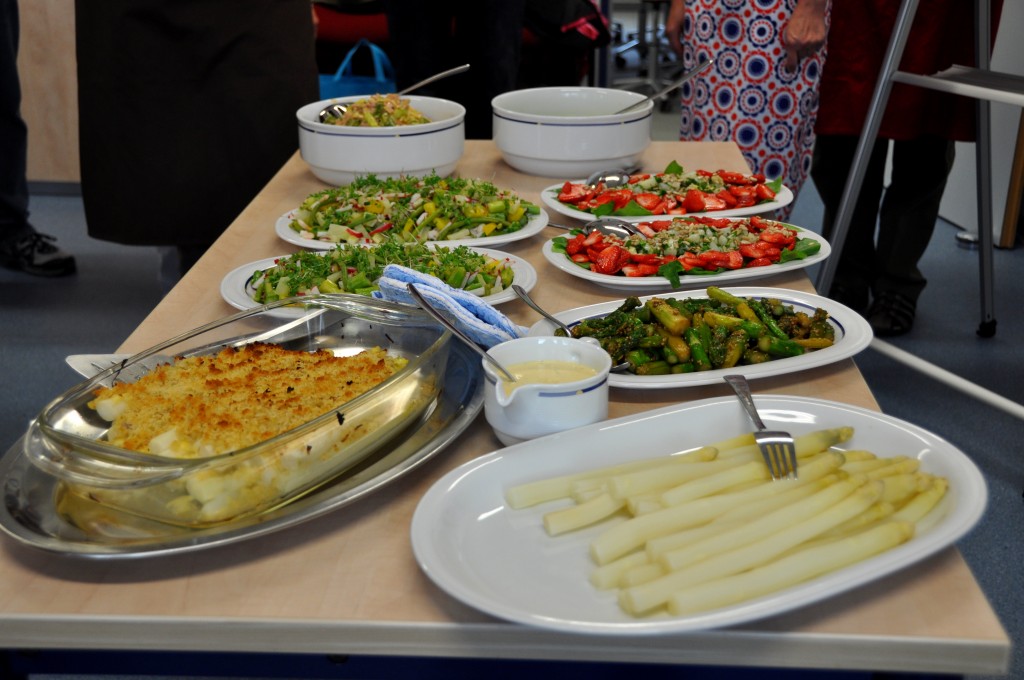
Next year, if we are going to get this involved in Spargel, I am going to invest in some nose plugs!

